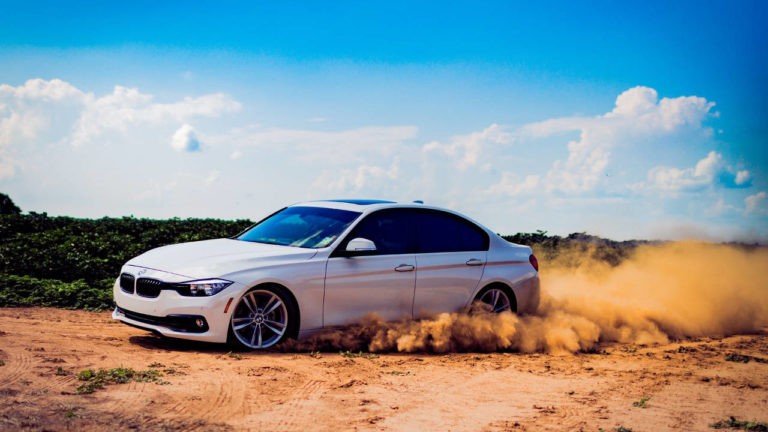I will always remember my first car in high school. It was a blue Plymouth Voyager van, handed down from my parents. As long as I paid the gas and insurance, I was able to drive it wherever I needed.
That van saw plenty of great times and there was something very functional about it. Plenty of room for friends and to hang out when we didn’t want to go home yet. As a high schooler, it gave me freedom that I had never had before, being able to drive myself around town while making sure to get home before curfew.
When that van finally died, I was able to borrow my an old Buick from my parents for a short period of time. While I was grateful to have those 4 wheels, driving a Buick as a high schooler wasn’t ideal.
My First Real Car Purchase

That prompted me to buy my first real car with my hard-earned cash. I went down to a local auto dealer and where a certain car had caught my eye. It was a 1999 black Jeep Cherokee and it was awesome.
It had all wheel 4×4 drive, power windows, AND the back windshield wiper actually worked. As a high school senior, I was in love.
And, for $5,000 cash, it was all mine.
I drove that Jeep throughout college and for a few years after we graduated. Unfortunately, it finally died as I was driving home from work getting off the highway. The alternator went out completely and I had to push it off to the side of the road.
After being towed to our repair shop, I decided I didn’t want to put the $1,000+ into it to repair it. It already had other problems with the A/C and was old enough that it was time to get a new car. I sold it for scraps to the repair shop for $500, and set out to buy a new car.
When It Rains, It Pours
About six months before this happened, Janes’s high school Jeep also died. Yes, she also had a Jeep Cherokee and loved it as much as I did.
At this point, we were a few years out of college and had just moved into our new house. We were in the middle of paying off our student loans and didn’t have a ton of extra cash laying around.
When Jane’s Jeep died, we decided to find a relatively new but used car for her. We found a 2013 Ford Escape that had around 20,000 miles on it and was about a year old. It checked all the boxes we were looking for in size, capability, and features.
We got it for $24,000 and was able to scrape together $8,000 as a down payment. That left us with a $16,000 loan at 2.5% interest over 5 years. That turned out to be $284 per month that we had to pay on top of our other expenses. Jane set to work paying down that loan.
So, six months after we got Jane’s new car, I also needed one. It was time to do it all again.
Adding a Second Car Loan
When it was my turn, I knew that I wanted a Toyota Rav4. Don’t ask my why, but that was what I liked at the time. It also had enough of the features I was looking for and was reasonably priced.
I also decided to go with a used car to reduce the overall cost. I ended up finding a certified pre-owned Rav4 with 22,000 miles for $21,500 dollars.
After putting down $6,000 as a down payment, I took out a loan of $15,500 at 2.5% interest over 5 years. This meant that we had an additional $275 monthly payment.
Within six months, we had suddenly added $560 in monthly debt that we had to pay off. That was significant considering our minimal income at the time and our other expenses.
Related: When Buying a Second Car for Commuting Makes Sense
Our Strategy for Getting Rid of Our Car Loans
When it comes to debt, Jane and I agree that we don’t want it. We don’t like debt and don’t want to pay interest. We have taken the approach to avoid debt as much as possible in all aspects of our life.
There are times, however, when it cannot be avoided. Our cars and mortgages are two examples simply because we didn’t have enough cash at the time.
When we took out our car loans, we were about two thirds of the way through our student loans. We also had just moved into a new house, so we had a new $290,000 mortgage. And then, we had to add $31,500 in car loans.
To pay off our car loans, we prioritized our loans and then paid extra
Prioritize Your Loans
The first thing we did was to determine what out priority was for paying off our debt. We had student loans at 9% interest, a mortgage at 4.25%, and car loans at 2.5% interest.
In our eyes, the mortgage wasn’t going anywhere soon due to its sheer size and we also knew that it wasn’t necessarily bad debt. With its relatively low interest rate, we decided to put this on the backburner. We paid the minimum monthly amount and didn’t put anything extra towards it for the first few years.
Our student loans remained our priority since they had the highest interest rates. When we had a few extra dollars, the bulk of it went towards our student loan debt.
This meant that our car loans took a medium priority. We would pay extra whenever we could, but our focus was on our student loans.
Our Loan Repayment Priorities
- Student Loans (9% interest, $88,000 total)
- Car Loans (2.5% interest, $31,500 total)
- Mortgage (4.25% interest, $295,000 total)
Pay the Minimum, then Pay Extra
For all of our debt, we always have paid the minimum, no matter what. We made sure to pay on time and never incur any late fees. We did our best to not give away money unnecessarily by being late.
Even while we were focused on our student loans, we paid the minimum required for our car loans. That meant we would be on track to pay off the cars within 5 years.
As we increased our income, we were able to pay a little extra towards our car loans. I also had a few successes building and selling websites as a side gig, so I used that money to help pay off the cars. This created a snowball effect that helped to reduce the loan balance exponentially as time went on.
As we got close to the end of the loans, we also got a little tired of looking at the balance. When it got to around $2500 left, we decided to dip into our savings and just pay the rest off outright. This alone helped to shorten our loans by 8 or 9 months.
All told, we were able to get rid of both car loans within 3 years.
Our Car Philosophy
With our current cars being from 2013 and 2014 and 130,000+ miles, they are starting to get a little older. However, we are currently planning to stretch our cars as long as we possibly can. We would rather not pay car loans right now and instead focus on saving, investing, and paying down our mortgage.
Especially with COVID, we are driving less than we did a year ago. This is helping to stretch our cars and reduce the weekly wear and tear. We continue to maintain the cars as much as possible and are willing to pay any reasonable repair costs. We do know that, at some point, there may be a costly repair that doesn’t make sense to do.
For example, if our car suddenly has a problem and has a $1,000 repair cost, we would have to weigh the benefits of doing it. We can compare a new car loan that may be $300 per month to the cost of the repair. A $1,000 repair should stretch the life of our car by at least 4 months in order to be the better choice.
If we get to a point where a repair is needed but I don’t think that it will stretch the life of the car, then it would be time to replace the car completely. But, until then, we are completely happy with keeping our existing cars and avoiding a new loan.













